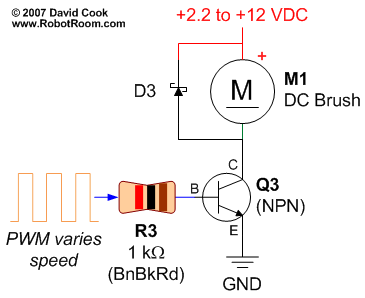Im trying to use a Freescale FRDM-KL25Z,

I have been looking at the datasheet to see if I can find the maximum oputput current of the pins with no luck, im assuming its 500mA since its powered via USB
I already have my code up and running, basically im using a potentiometer connected to my ADC to change the frequency from my PWM, it comes out at the port i assign however how can I drive a DC motor without blowing the FRDM-KL25Z or anything else, the first thing it came to mind was look in the internet i found several diagrams showing a zener diode to protect the motor, but i lack the knowlege of why is that zener there, and then i found the use of NPN transistors, however that would mean im using the PWM to open and close the transistor several times while i use an external power supply instead of the power provided by the board, so I ask here, is it possible to make the motor spin WITHOUT an external power supply?
This is the most complete circuit that I have found, but still im wondering if there is a better way to do it, also D3 is a normal rectifier diode instead of a Zener in this case

Heres another pick where they use a resistor to limit the current going to the transistor (i asume its in order to drop the output current as low as possible) while using an external power supply to feed the motor

